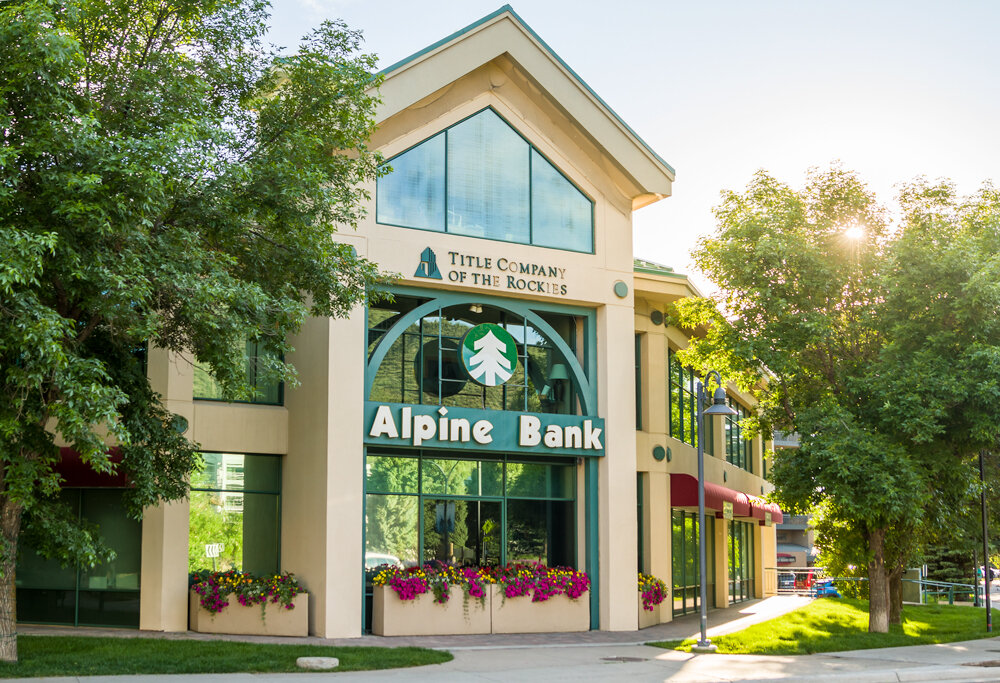Urban Villages and APARIUM Hotel Group | Populus Hotel GHG Emissions Dashboard
Populus Hotel GHG Emissions Dashboard
Lotus worked with Urban Villages and the APARIUM Hotel Group to create a public greenhouse gas emissions tracking dashboard in Microsoft PowerBI for the Populus Hotel. The dashboard tracks real and predicted greenhouse gas emissions and offset activities from the construction and operations of the hotel over time. The dashboard includes functionality that allows for easy data updates, transparency for specific operations (waste diversion, water, energy, etc.), and tracks whether Populus has achieved their carbon positive goal. Lotus also developed back-end calculations for the quantification of greenhouse gas emissions and documenting methods and assumptions for all calculations in a user guide.
preview of the Populus Hotel GHG Emissions Dashboard
Blaine County, Idaho | County-Wide GHG Inventory
County-Wide GHG Inventory
Lotus is working with Blaine County, Idaho to complete a 2023 county-wide greenhouse gas emissions inventory. The inventory includes breakout tabs for the following communities: Hailey, Ketchum, Sun Valley, and Bellevue. The workbook also includes a tab that has all the activity and emissions data set up to be imported into ArcGIS Online so that the County can create an interactive online dashboard to show the results of the inventory.
City and County of Denver | 80 x 50 Climate Action Plan & Annual GHG Inventory
80 x 50 Climate Action Plan & Annual GHG Inventory
The City and County of Denver’s 80x50 Climate Goal: Stakeholder Report establishes a path to reduce community-wide GHG emissions by 80 percent by the year 2050. Lotus led the development of Denver’s 80x50 Plan by conducting a review of processes and plans already established by the City; conducting a needs assessment; working with a diverse network of over 80 stakeholders and community experts in the fields of energy and transportation to identify the most relevant and impactful strategies for Denver to pursue; modeling the impacts of stakeholder-identified emissions reduction strategies; and drafting a CAP that will support the City in achieving its goals. Additionally, Lotus completed Denver’s community GHG inventories for calendar years 2018-2022.
City and County of Denver | Renewable Heating and Cooling Plan (Building Electrification)
Renewable Heating and Cooling Plan (Building Electrification)
Lotus led the development of the City and County of Denver’s Renewable Heating and Cooling Plan, a roadmap for beneficial electrification in existing buildings. As part of this process, Lotus convened stakeholders from across the metro area and the State to understand the impacts of electrification on the workforce, disproportionately impacted communities, building owners of all sizes, homeowners, equipment manufacturers, and other stakeholders.
Lotus managed a variety of engagement activities ranging from surveys and one-on-one interviews, to large focus groups and workshops. In addition to the public input that helped to shape the plan, Lotus worked with subcontractors to complete a building stock and technology transition analysis and a grid and cost impact analysis. The final plan includes not only details on the technical components of electrification, but also the various levers (i.e., policy, financial, incentive, programmatic, and communications) that can be triggered to support full electrification of Denver’s applicable building stock over the coming decades.
Lotus has been lucky enough to consistently work with the City and County of Denver since 2016. Other work Lotus has completed for the City and County of Denver includes:
-Completed GPC-compliant GHG emissions inventories every year since 2017, CDP Reporting, and developed Denver’s first municipal operations inventory (2020).
-Completed a life-cycle GHG analysis for waste.
-Completed an embodied carbon analysis for buildings. (see below)
Lotus developed the maps below to use data to inform Denver’s Electrification plan. The maps showed inequities and helped identify vulnerable populations.
“Lotus partnered with Denver to create our Renewable Heating and Cooling Plan. The plan was practical and achievable yet pushed the boundary of what is possible. They excelled at project management, keeping the project partners on task. They led fun, engaging discussions with a variety of stakeholders whose insight helped shape the plan. Once all the quantitative and qualitative data was collected and analyzed, they synthesized the findings into a plan that could be understood by the public, and not just limited to those with an electrification background. We are thrilled with their work and would recommend them for future projects!”
“Lotus has been an exceptional partner in the development of a key technical roadmap that will lead to strong policy implementation. They are helping us address all the challenges and opportunities regarding building electrification in existing buildings.”
Adams 12 Five Star Schools | GHG Inventory And Related Work
GHG Inventory And Related Work
Lotus developed the first GHG emissions inventory for Adams 12 Five Star Schools for activities in 2017, which included a measurement of emissions generated from energy use, fleet activities, industrial product use (i.e., refrigerants), waste, wastewater treatment, and consumption-based sources (i.e., paper, food, and fertilizer). Lotus developed the tool to align with the Sustainability Indicator Management and Analysis Platform (SIMAP) so that the district could compare its emissions with other school districts using SIMAP. Along with the GHG inventory, Lotus provided a summary report and an Inventory Management Plan (IMP) so that Adams 12 staff could complete this work in-house in future years. Following the completion of the GHG inventory, Lotus assisted Adams 12 in auditing the district's 2018 inventory (completed in-house with the guidance set forth in the IMP) and also created a modeling tool to measure the impact of the district's sustainability goals on GHG emissions.
Lafayette, Colorado | GHG Inventory
2019 GHG Inventory and infographic
Lotus developed Lafayette’s 2019 community GHG inventory, wrote a final report, and created an infographic to communicate the results of the inventory and highlight progress toward the City’s climate goals. Lotus also created an Inventory Management Plan (IMP) to document all data sources and methodology used in the inventory.
Dubuque, Iowa | GHG Inventory and BAU Project
GHG Inventory and BAU Project
Lotus worked with the City of Dubuque to estimate the city’s 2022 community-wide greenhouse gas emissions. The city was looking for a consultant to verify their inventory and methodology as it had been done previously by student volunteers at the University of Northern Iowa. Lotus compared previous inventories to the standard GPC protocol and was able to suggest new emissions sources that can be included in the inventory and also wrote an inventory management plan so city staff can update the inventory workbook in the future. Lotus also updated the City’s business-as-usual model with the latest emissions and projections. The project was capped off with a presentation to the Dubuque City Council and a final report.
City of Bozeman | GHG Inventory, Infographic, and Report
GHG Inventory, Infographic, and Report
Lotus developed Bozeman’s 2020 community GHG inventory and developed an inventory management plan for the City’s new Sustainability Associate. Lotus also presented the results of the inventory in person to the City’s Sustainability Board and trained the Bozeman team on how to update the inventory workbook in future years. Additionally, Lotus created a final report that described the results of the inventory, trends between the baseline year (2008) and the 2020 inventory, and results from an analysis of the average annual carbon sequestration of the city’s lands using the LEARN tool from ICLEI. Lotus also developed an infographic for the City to use when communicating the results of the inventory with residents and important stakeholders.
Park City, Utah | Community GHG Inventories
Community GHG Inventories
Lotus first worked with Park City in 2017 to create the City’s 2016 community-wide greenhouse gas emissions inventory. Lotus later worked with the City again in 2022 to develop follow up inventories for calendar years 2020 and 2021. The Global Protocol for Community Greenhouse Gas Emissions Inventories (GPC) was utilized to complete all inventories.
Mission, Kansas | Community-Wide and Municipal GHG Emissions Inventories; Climate Action Task Force Facilitation
Community-Wide and Municipal GHG Emissions Inventories; Climate Action Task Force Facilitation
Lotus worked with the City of Mission, Kansas to complete the City’s 2022 community-wide and municipal operations greenhouse gas emissions inventories. Additionally, Lotus was tasked with creating inventory management plans for each inventory for the City to use in updating the inventories in future years. Lotus summarized the results of both inventories in a final report and developed a Storymap to communicate the results of the inventories to the wider community. Rachel also presented the results to the City Council and helped facilitate a community meeting aimed at gathering input from community members about sustainability efforts in the City and greater Kansas City region.
Additionally, Mission contracted with Lotus to help assist the newly hired City Administrator with updates to the greenhouse gas emissions inventories as well as to facilitate the City’s Climate Action Plan Task Force. The Task Force is charged with helping City officials to prioritize and implement actions within the City’s climate action plan. Lotus facilitated 4 meetings with the Task Force and assisted the Task Force in developing a Prioritization Matrix for the City’s climate action strategies.
Alpine Bank | Annual Sustainability Audit
Annual sustainability audit
Lotus has been collaborating with Alpine Bank since 2014 to help maintain and update Alpine Bank’s Utility Tracking Database on an annual basis, calculate emissions from facilities, and normalize energy use for the weather.
Lotus performs a quality check on Alpine Bank’s energy and water use tracking spreadsheet. The tracking spreadsheet has records of monthly electricity, natural gas, and water usage at all of Alpine Bank’s locations across the state of Colorado. Once a quality check is completed, Lotus reviews the results and errors found with the project team at Alpine Bank. Finally, Lotus writes a section reviewing the emissions and activity data trends across the organization to be included in the annual report.
“Hillary was tasked with creating a new Excel-based tool that empowered Alpine Bank’s energy managers to normalize energy data for weather from 2006 moving forward. The tool, which was designed to complement our internal energy tracking spreadsheet system, not only enables us to better understand our energy usage across our 38 locations but also helps us meet ISO 14001 goals, the results of which are published in our annual Environment Report. We continue to rely on Hillary as a key technical resource for various Alpine Bank sustainability initiatives. We highly recommend Lotus’s services for comparable projects.”
Alterra Mountain Company | GHG Inventory and Sustainability Strategies
GHG Inventory and Sustainability Strategies
Lotus developed greenhouse gas inventories for the 16 resorts owned by Alterra, Canadian Mountain Holidays, Alpine Aerotech, and Alterra’s Denver headquarters. Included in this was a detailed analysis of the emissions impact of visitor travel to the resorts. Lotus partnered with McKinstry to develop specific climate action strategies and an interactive Storymap detailing the results and recommendations. Lotus is currently updating the induced travel analysis for the latest fiscal year.
“Alterra Mountain Company is one company of many unique brands, and Lotus embraced the challenge of working effectively within our organizational structure. For each destination in the Alterra portfolio, the Lotus Team developed custom greenhouse gas inventories and inventory management plans using diverse data inputs. They synthesized complex data sets into manageable workflows that could be easily explained and replicated year over year. Guided by the incredible body of work from Lotus, we have been able to prioritize data-based actions that maintain the unique character of each destination and community, advance climate action policy, and aggressively reduce emissions. We are incredibly grateful to work with the Lotus Team and highly recommend them to other clients, especially those with complex operations.”
City of Commerce City | Sustainability Action Plan
Lotus led the development of sustainability and community health recommendations that are woven into the first Sustainability Action Plan for Commerce City, Colorado. An environmental justice priority community, the City wished to ensure that recommendations were derived from community input and informed by data. Lotus facilitated a citizen-led Environmental Policy Advisory Committee to develop recommendations that will result in a healthier, more sustainable community. Additional community outreach occurred in the form of community meetings, civic engagement training, a community survey, and workshops with City staff and business and industry leaders. As part of the process, Lotus also completed the City’s first GHG inventory and business-as-usual forecast, modeling the GHG impact of strategies, identified the cost impacts of strategies and funding resources, and met with City staff to develop internal sustainability recommendations. Subcontractors on the project analyzed and made recommendations specific to air and water quality issues in Commerce City, which were woven into the full recommendations report.
In addition to completing the City’s first community-wide greenhouse gas emissions inventory as a part of the Sustainability Action Plan development, Lotus developed the City’s first municipal operations greenhouse gas emissions inventory. Lotus utilized the Local Government Operations Protocol to complete the inventory. The development of this inventory will help the City government create and monitor sustainability actions outlined in the Sustainability Action Plan. Lotus continued supporting the Commerce City Department of Energy, Equity and the Environment with facilitation of the Environmental Policy Advisory Committee and designing program collateral for one year after the plan was finalized.
“Commerce City unanimously passed a Sustainability Action Plan which was the culmination of input from multiple community and business meetings. Lotus was instrumental in facilitating the process as well as preparing technical documents such as an Air Modeling Threshold Report; Greenhouse Gas Inventory and Stormwater Management Plan. The Sustainability Action Plan was translated into Spanish for increased stakeholder engagement. Lotus has provided outstanding service””
City of Las Cruces | Climate Action Plan
Lotus completed the City of Las Cruces’ 2018 GHG inventory and supported the development of GHG strategies to reduce emissions to 80 percent of 2018 levels by 2050. This work included the development of both a community and municipal inventory, in-person and remote stakeholder facilitation for two workshops to select GHG reduction strategies with a focus on equity and resilience, high-level modeling of strategy impacts, and drafting the final plan.
The inventory and strategies will help the City to understand its carbon footprint, identify and implement ways to reduce its carbon footprint, gain community buy-in, and inform future policy and programs.
In 2024, Las Cruces contracted with Lotus to update the City’s business-as-usual GHG emissions model as well as to complete calendar year 2023 greenhouse emissions inventories for the community and local government operations.
“The Council was so impressed with Lotus’ work - the report, the strength of the data, and the equity-centered approach. I will be putting forward the 9 strategies, targets, and co-benefits to adopt as a resolution. The actions in the CAP will be used as a foundation for deeper dives so I can get even more community involvement”
City of Longmont | GHG and Related Projects
Lotus has worked on multiple projects with the City of Longmont:
To support the City’s commitment to regularly update their greenhouse gas emissions (GHG) findings, Lotus completed a GHG inventory for the City in 2016. Lotus has calculated Longmont’s greenhouse gas (GHG) emissions inventories since 2018. Lotus built upon this work again in 2019 for an updated inventory, as well as modeling for new construction building electrification.
In 2023, Lotus worked with Longmont to write and design a GHG memo that not only told the story of the data, but also connected it to other sustainability efforts at the City. The memo was designed to captivate and inform a diverse audience. Lotus worked with the City to make the document accessible for all readers.
Lotus is currently working on updating and simplifying the current GHG reduction strategy model with more recent emissions factors, data inputs, and updated targets that align with the City’s Climate Action Recommendations Report and the recent transportation plan.
Colorado Clean Energy Fund | Impact Evaluation Tool and Tool Updates
Lotus conducted an evaluation to understand the impacts of Colorado Clean Energy Fund (CCEF) funded projects on reaching the fund’s goals of mitigating climate change, advancing environmental and economic justice, and creating a healthier and more resilient Colorado. Lotus identified key impact metrics for CCEF including energy generation and use, greenhouse gas emissions reductions, cost savings, and equity metrics. These metrics were incorporated into an interactive evaluation tool which calculates impacts for individual projects and all projects together. The tool was developed to allow CCEF to enter any new projects and estimate energy impacts of different project types such as energy efficiency, equipment electrification, and electric vehicle charging infrastructure.
Lotus also provided recommendations for improving data collection to ensure CCEF can continue to measure project impacts for all future projects.
Lotus worked with CCEF to update the evaluation tool to account for new residential programs offered by CCEF. This work entailed developing an API connection between CCEF’s customer relationship management system (Zoho) and the evaluation tool. This connection allows CCEF to import large numbers of residential projects into the tool without the need for manual data entry. Lotus then created program specific impact calculations that aligned with the metrics created in the original tool. The resulting updates allow CCEF to quickly import large batches of projects to the evaluation tool and automatically calculate impact metrics for all projects.
“The Lotus Engineering & Sustainability team developed a comprehensive, easy-to-use impact measurement tool for the Colorado Clean Energy Fund (CCEF). The entire engagement with Lotus was well-organized and cost effective, and we were amazed by how sophisticated the end product was. Thanks to the tireless effort by the team at Lotus, CCEF is now able to efficiently track and calculate its economic, environmental, and social impact across its portfolio. CCEF could not have achieved this without the help of Lotus!”
CORE GHG Inventories and Regional Summaries
Lotus is completing Pitkin County and the Roaring Fork Valley’s GHG Inventories and regional summaries; this includes inventories for the City of Aspen and Towns of Basalt and Snowmass. The work is supported by the Community Office for Resource Efficiency (CORE). Building off each communities’ past efforts, Lotus will help them determine how they are progressing towards their emission reduction goals. A data dashboard will provide the opportunity for the community to view emissions from different sectors, sources, and geographies.
Denver Public Schools | Climate Action Plan
climate action plan
Our work supporting Denver Public Schools and their students was recently highlighted by Vice President Kamala Harris as a model for others to follow.
Lotus worked with Denver Public Schools (DPS) to develop new goals and programs focused on GHG emissions reductions, renewable electricity, environmental justice and education, and resource management. The plan was be co-created with DPS stakeholders and included a strong focus on equity and accessibility as well as a fun, interactive, and engaging process. The new plan outlined a roadmap for achieving the goals laid forth in the recent DPS Climate Change Resolution. These goals included reducing greenhouse gas emissions by 90 percent of 2010 levels by 2050, prioritizing sustainability actions in schools and communities facing greater environmental injustice, and making sustainability a core value of DPS. Lotus also fully reworked the DPS website to drastically increase engagement with students, staff, and general public.
Lastly, Lotus created a program to help empower students to lead this effort to ensure that this work continues long after we are gone.
You can view the plan in Spanish here. Este plan es disponible en español AQUI.
“Lotus was pivotal in supporting us in the creation of a transparent, clear, and relatable climate action plan that will engage our greater community for years to come. Their ability to engage our stakeholders throughout the development was invaluable.”
“Vice President Kamala Harris says Denver students’ climate plan is a model for others to follow.”
Eagle County | Building Code Energy Modeling & Upfront Cost Analysis
In 2022, Lotus supported Eagle County in analyzing new construction code packages with electrification amendments to provide energy use and cost data which will be used to inform the County code update process in 2023. Lotus analyzed four code package options as they compare to Eagle County’s current new construction energy code, the 2015 International Energy Conservation Code (IECC). The code packages were evaluated by
upfront cost impacts,
greenhouse gas (GHG) impacts over the lifetime of the building, and
operational energy cost impacts over the lifetime of the building.
The code packages investigated in this study included the 2021 IECC without amendments, the 2021 IECC with an electric-ready amendment, the 2021 IECC with an electric-preferred amendment, and the 2021 IECC with an all-electric amendment. These code options were analyzed for single-family homes, multi-family complexes, and commercial properties. The scope of work consisted of:
Upfront Cost Analysis: A literature review of existing studies analyzing the cost impacts of updating energy codes from prior code cycles, in this case, the 2015 and/or 2018 IECC, to the 2021 IECC. Additional studies were reviewed to understand the upfront cost impacts and cost-effectiveness of three additional above-building code standards, including electric-readiness, electric-preferred, and all-electric provisions.
Energy Modeling: Energy modeling for three building types typical of Eagle County construction: a single-family home, a multifamily building, and a mixed-use commercial building. Each building type was modeled to meet four code standards: the County’s current energy code (2015 IECC), the 2021 IECC, the 2021 IECC plus an electric-preferred standard, and the 2021 IECC with all-electric systems. The modeling was conducted to evaluate total annual energy consumption, total annual energy costs, and greenhouse gas emissions over the lifetime of the building (40-year period) to understand the emissions and cost implications of advancing to a new building code. The single-family and multifamily energy models were developed using the National Renewable Energy Laboratory’s Building Energy Optimization Tool. The commercial building energy model was developed using the Department of Energy’s eQUEST tool.
The upfront cost analysis and the energy modeling will demonstrate which code options are the most cost effective and which will have the greatest contribution to reducing greenhouse gas emissions in the County. In addition, Eagle County will be participating in a code cohort with surrounding jurisdictions to review and adopt supporting amendments alongside the 2021 I-codes. This effort will help advise Eagle County on which supporting amendments will support the achievement of their climate action goals through their next phase of energy code adoption.
Eco-Products | GHG Inventories
Since 2015, Lotus has supported Eco-Product’s with their operational carbon footprint analysis. This work includes collecting and analyzing data for greenhouse gas emissions from the headquarters’ electricity and natural gas, business travel, employee commuting, materials management, and paper consumption. David Fridland can speak to our GHG Protocol work. We have been completing their annual inventory since 2016.
Lotus has also supported the writing of their Sustainability and Impact Reports for the last four years. To do so, Lotus has conducted informational interviews with key staff members and supplementary research to draft engaging, pithy text to showcase Eco-Products’ impactful work over the year in question.
“Eco-Products engaged Lotus to calculate our 2015 operational carbon footprint. This involved collecting and analyzing data for greenhouse gas emissions from our headquarters’ electricity and natural gas, business travel, employee commuting, materials management, and paper consumption. It also entailed updating our Excel-based tracking system and incorporating data for a company we recently acquired. Throughout the process, Hillary provided helpful suggestions and options. She documented all of the changes and decisions in an organized fashion, and submitted her work promptly. It could not have gone any more smoothly, and I can’t recommend Lotus highly enough. This was Eco-Products’ first time working with them, and it won’t be our last!”













































